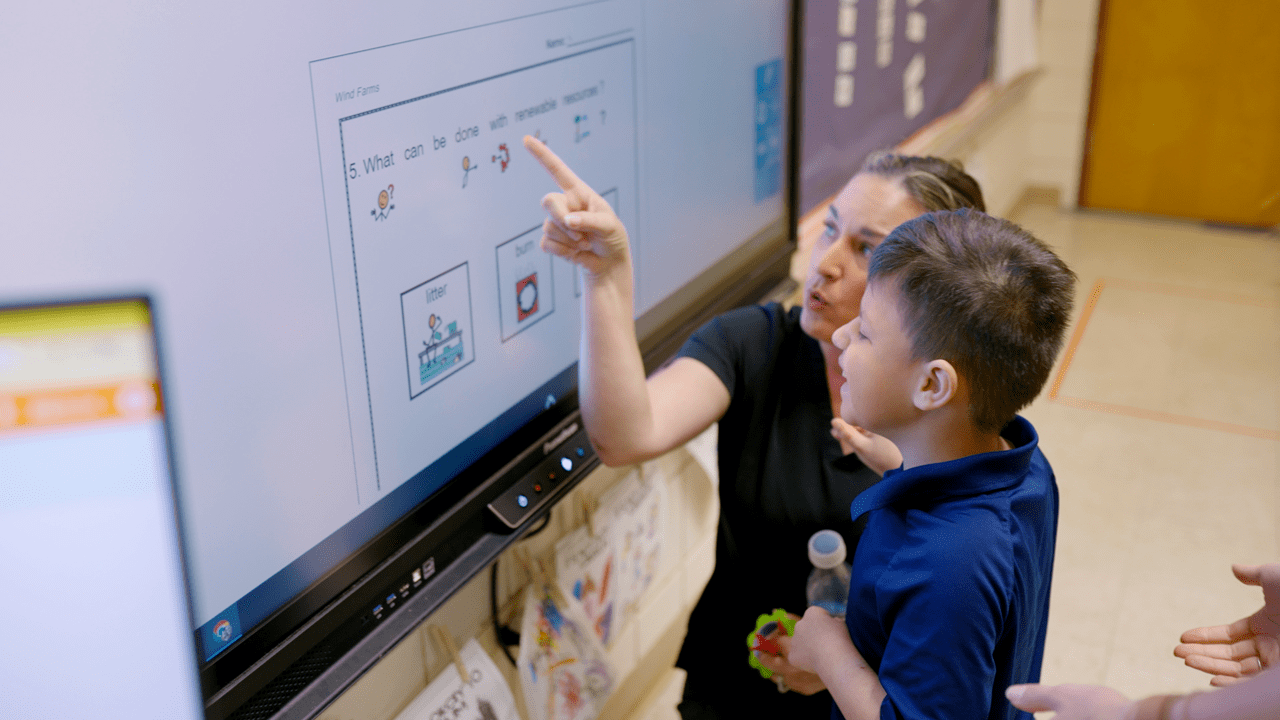A Short History of Relevant Words
We all know words are important. In particular, the words we use to refer to and address people matter, especially when it comes to conveying respect and understanding. Historically, a range of words has been used to describe people with disabilities, and when we look to the not-too-distant past, we encounter words that now sound appalling. But at one point or another, those same words were accepted and commonly used by educators, health care professionals, and the wider community.
Difficult as it may be to conceive today, words like idiot and moron were once medical terms that described people with intellectual and developmental disabilities. As those words entered the common lexicon, they took on hurtful and insulting connotations—and were eventually replaced with then-neutral terms including mentally retarded. But by the middle of the twentieth century, the word retarded carried its own stigma. In 2010, Rosa’s Law made intellectual disability the official label for people with disabilities in all federal health, education, and labor policy. But because the evolution of language happens over the course of decades, the terms intellectual disability and developmental disability, which are currently viewed as preferred terms, may eventually be considered derogatory and be replaced.
The Role of Educators
As educators, it’s crucial for us to write and speak with respect and sensitivity when communicating with and referring to students. We want to let our students and those who love them know that we respect and value them as people. On the flip side, it’s important to remember that words can hurt, whether used carelessly or intentionally. Fortunately, there are guidelines we can follow to demonstrate respect for all students and promote a feeling of inclusiveness. Using person-first language is one well-accepted way of speaking about people with disabilities that is professional, respectful, and compassionate.
Person-First Language
Person-first language is more than political correctness or a polite way of talking; it’s all about respect. The basic premise behind person-first language is that we see the person first, not the disability, and we communicate this through the language we use.
Many people would prefer to be called by their name rather than be called the girl with glasses, the short kid, the blonde, and so on. Similarly, if someone has a feature or ability that sets them apart and can be viewed as a disadvantage or a difference, they usually don’t want to be known for or exclusively identified by that difference. Person-first language puts the person first, ahead of the difference. It uses the verb has instead of is and avoids using nouns to label people.
How to Use Person-First Language
Say this
- A boy who has dyslexia
- People with disabilities
- Sam has epilepsy.
- They’ve been diagnosed with an emotional disorder.
- She has quadriplegia.
- Taylor has an intellectual disability.
- Students with learning disabilities
- Students who receive special education
Not this
- Dyslexic boy
- Disabled people
- Sam is an epileptic.
- They are emotionally disturbed.
- The quadriplegic girl.
- Taylor is intellectually disabled.
- Learning-disabled students
- The special ed students
Identity-First Language
There are always exceptions to any blanket rule, and the use of person-first language is no different. There are people who prefer identity-first language and believe that this is the most respectful way of speaking. They believe that their disability is an integral part of their identity and is something to embrace, not avoid. The Deaf community is a perfect example. This includes people who have hearing loss, use sign language to communicate, and may be children of Deaf parents who use sign language as their primary language. A related note: When writing about the Deaf community as a whole or referring to its individual members, the D in deaf is capitalized.
Members of the Deaf community do not consider deafness to be a disability, and they take pride in their Deaf culture. They may use the term hard of hearing rather than hearing impairment, and they generally view deafness as a culture that is different rather than missing something or less than.
Other people with or without disabilities share the Deaf community’s identity-first perspective. Some people who have autism, for example, prefer to be called autistic people.
When working or interacting with an individual who has a disability and wishes to be known by identity-first terminology, it’s important to respect their wishes. Showing respect for the individual is key.
Guidelines for Writing and Speaking about People with Disabilities
Person-first language should always be used in professional writing. When speaking, person-first language should be the default if the preference of a person being spoken of or referred to is unknown. And in general, people who use person-first or identity-first terminology agree on key points regarding respectful language guidelines for speaking and writing.
Don’t Sensationalize a Disability
You may notice that when reading an article or hearing about an accomplishment of a person with a disability, there are often qualifiers that detract from the achievement. For example, we might be more likely to hear a sports announcer say, “John courageously finished the race in four hours despite his disability,” instead of, “John finished the race in four hours.”
Some people use sensationalized language or words that play on our emotions to get attention when describing a great accomplishment of someone who happens to have a disability. Understandably, labeling accomplishments or everyday activities as brave is viewed as condescending or exploitative by disability rights groups. Instead of taking this approach, simply acknowledge accomplishments with the same accolades you would use for a person without a disability and avoid adding qualifiers like despite their disability.
Avoid Language That Perpetuates Stereotypes
Historically, people with disabilities have been categorized as victims, heroes, or villains in literature, pop culture, and entertainment. These portrayals affect the general public’s perception of people with disabilities, even if on a subconscious level.
It wasn’t until fairly recently that the movie industry began casting actors with disabilities in storylines that focused on something other than the actor’s disability. And today, many well-intentioned people still fall into the habit of viewing and describing people with disabilities as heroes or victims.
People who live with a disability, just like people who don’t, deserve and generally prefer to be acknowledged in a straightforward way for their characteristics and accomplishments. Beyond that, language can play a role in perpetuating stereotypes and broader misunderstandings. For example, representing people with disabilities strictly as heroes not only reinforces the idea that those individuals aren’t actually expected to achieve at a high level, it also can cause false expectations that all people with disabilities should be superachievers.
Viewing or portraying someone with a disability as a victim is equally distasteful. Few people want to be pitied or viewed as tragic, so it’s best to avoid overly emotional language like suffers from, is a victim of, is afflicted with, and unfortunate.
People with disabilities, like those without, often prefer to be seen for who they are, what they believe, and what they accomplish; with some exceptions, they don’t wish to be viewed through the lens of their disability.
Follow These Guidelines When Using the Words Handicapped, Accessible, and Disability
The general rule is to focus on abilities and not limitations. Instead of saying handicapped parking and handicapped bathroom, use the terms accessible parking and accessible bathroom. Use the word handicapped only to refer to something in the environment that presents a barrier for a person. For example, a person in a wheelchair is handicapped by the stairs; they are not a handicapped person. Use the term disability to describe the functional limitation that interferes with a person’s ability to do an activity like walking, talking, breathing, learning, and so on.
Avoid Euphemisms When Describing a Person with a Disability
Terms like special, handicapable, and physically challenged are considered condescending and reinforce the idea that disability cannot be dealt with honestly and openly.
Avoid These Terms and Words
- Crippled
Instead, use the phrase has a physical disability, or say has (name of specific disability here) - Retarded
Use the term intellectual disability. - Midget
Use the term little person or person of short stature. - Mute or Dumb
These terms are sometimes used to describe a person who has low verbal ability or uses augmentative and alternative communication (AAC) to speak. Use those phrases instead and note too that few people are truly nonverbal. - Confined to a wheelchair and wheelchair bound.
Contrary to the sound of these phrases, wheelchairs give people who need them the freedom to sit upright and to move. Many people who use wheelchairs are happy to have them and view them as a way to be more independent. Given this, say uses a wheelchair. - Birth defect
Say congenital disability.
Terminology Overall
Everyone is unique, made up of characteristics that are not readily visible, and what we may see first in a person may not give a clear indication of the person’s thoughts, feelings, responsibilities, or abilities. Using respectful language helps to humanize all people by focusing on the individual rather than the disability. It prevents perpetuation of stereotypes, generalizations, and false assumptions, and is an important step toward respecting and appreciating all individuals.



